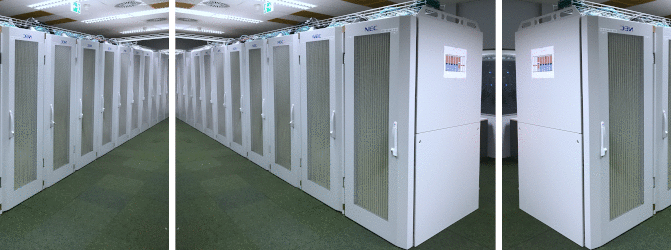Hybrid HPC system (nesh)
 Students Students |
 Employees Employees |
 Faculties Faculties |
 Stud. Unions Stud. Unions |
|---|

The HPC system called nesh is a hybrid computer system that provides high computing power in the form of a combination of a scalar Linux cluster including GPUs and a NEC SX-Aurora TSUBASA vector system.
The user documentation of the nesh system is compiled
under the link https://www.hiperf.rz.uni-kiel.de/nesh.
under the link https://www.hiperf.rz.uni-kiel.de/nesh.
Support and Consulting
HPC-Support-Team: hpcsupport@rz.uni-kiel.de
Responsible contact persons at the Computing Centre:
Please see HPC-Support and Consulting.
